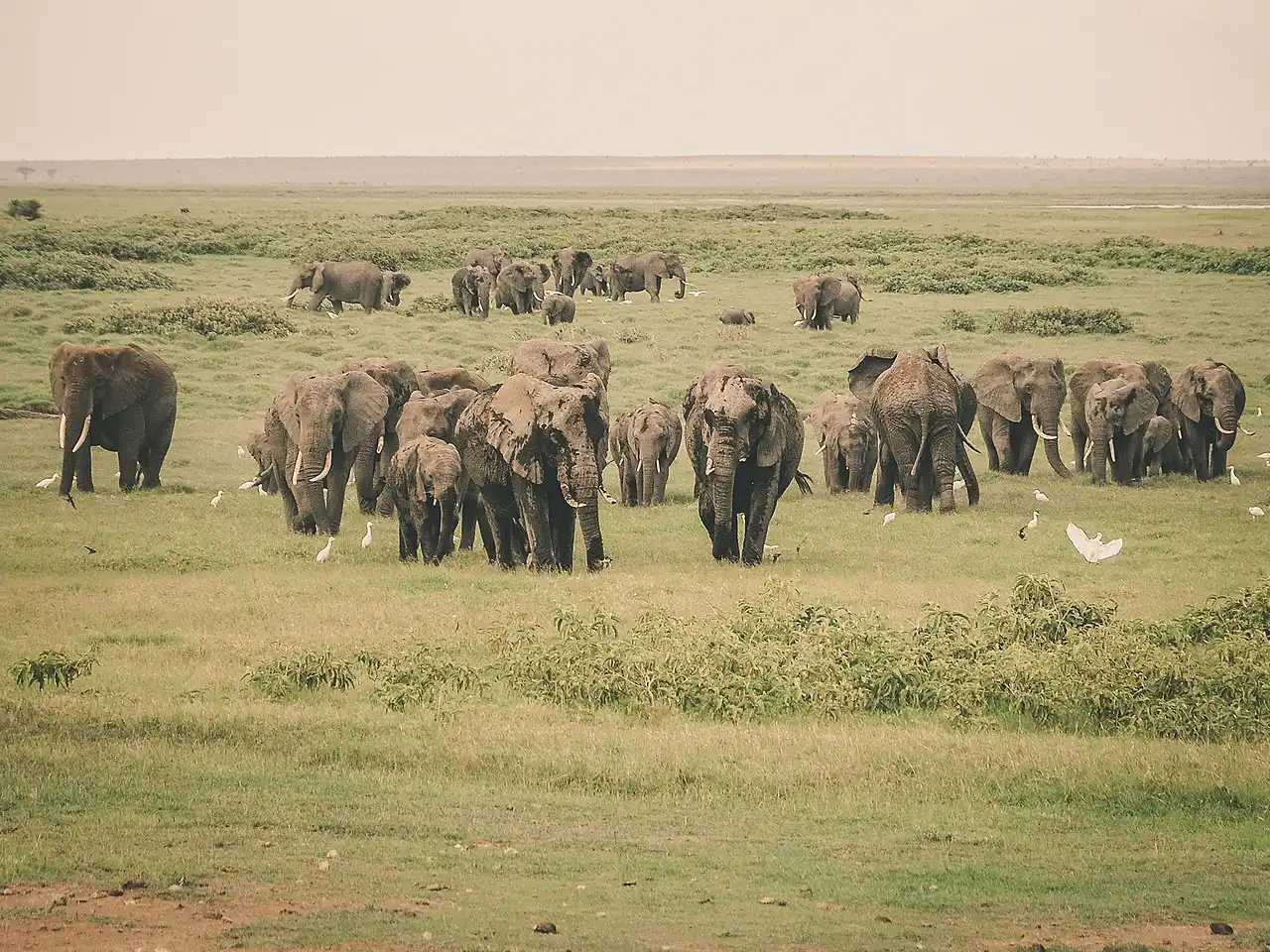




The Tuli Block is actually a strip of land which juts out between South Africa and Zimbabwe and it’s quite different from anywhere else in Botswana. Picture massive trees, rocky outcrops and red sand for starters.
East of east is known as the Northern Tuli Game Reserve. Here there’s more than 700 km² of privately owned land including Mashatu Game Reserve and Tuli Safari Lodge. Mashatu itself is often called the largest privately owned reserve in Botswana, and combined with its neighbours it forms one of the biggest continuous conservation areas in the country.
Sitting between the Limpopo, Motloutse and Shashe rivers, Tuli has lots of animals. Get your guidebooks out and start ticking off elephant, kudu, impala, wildebeest, giraffe, lion, zebra and leopard. And think big numbers – Tuli boasts the largest herd of elephant on privately owned land in Africa. They’re clearly as enamoured with this place as we are.
Mashatu shares unfenced borders with both the South African and Zimbabwean national parks in the south and north respectively. This vast area forms part of a cross-boundary wildlife conservation area protecting the substantial biodiversity of fauna and flora in this region. As well as animals, there are over 350 bird species.
Whilst the rest of Botswana is flat, Tuli comprises huge rock formations and hills in the east. It’s a savannah landscape, Namibia-esque at times, and there are lots of baobab trees – the famous ones that are, frankly, upside down. Sorry trees but you are.
The rock formations in the Tuli region exist because Tuli lies along a fault line in the Earth’s crust. Geologists will be chuffed. In fact, Tuli has lots of archaeological and historical sites. For tens of thousands of years the San hunter-gatherers lived here. They left behind rock art aplenty: a Stone Age Instagram account with a gazillion views, likes and shares. About 2,000 years ago the Iron Age settlers muscled in and you can see their remains too – pottery shards, beads, smelting relics and even the occasional granary.
We’re still in the Tuli Block but we thought we’d give Solomon’s Wall its own paragraph. It really is a remarkable geological feature. It’s the remnants of a 30m-high basalt dyke which once formed a natural dam wall across the Motloutse River, holding back a great lake. The two ends still guard each side of the river valley. You’ll need a 4x4 to get here but it’s worth it.
Near Solomon’s Wall are the Motloutse Ruins, once the royal dwelling of the Leopard Kopje Dynasty. The Dynasty was renowned for its Iron Age mining power and complex processes to mine gold and other metals. The old stone walls of the ruins are still considered sacred by some locals who dare not encroach.
What makes Tuli so appealing is the combination of excellent wildlife viewing and unique scenery, with far fewer crowds than Botswana’s headline acts like the Okavango Delta or Chobe. Here you can game drive, walk, horse ride or cycle alongside elephant herds. Photographers flock to Mashatu’s underground hides, where you can sit at eye level as herds of elephant, giraffe or antelope come to drink. In short:
Tuli is different. It’s wild, it’s ancient, it’s alive with animals. For anyone who thinks they already know Botswana, the Tuli Block will surprise you.




"A dream come true"
We had the most amazing family holiday, everything worked so perfectly, the arrangements and accommodation was spectacular!
"Unforgettable trip to Namibia – Thank you Namibia Tours & Safaris!"
We are a group of four from Romania and spent 3 unforgettable weeks in Namibia. We can't recommend them enough, and for any future travels in Namibia or other parts of Africa, we will definitely use their services again.
"We had a great experience"
From the time we put the key in the ignition till we boarded the plane in Windhoek nothing went wrong.
"Unforgettable bird photography trip in Namibia"
It was a fantastic experience, everything was very well organised, went smooth and according to expectations. It was our first self drive in Africa and it was a great, unforgettable time.